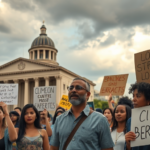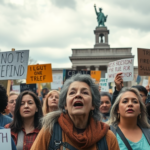Introduction:
The term “woke” began as a call to remain alert to societal injustices, particularly in the African American community. Over time, it evolved into a broader cultural phenomenon, touching upon issues like race, gender, sexuality, and the environment. But how did wokeness transition from a grassroots concept to a driving force in politics, media, and everyday conversations?
Origins of the Term:
The word “woke” originally referred to being awake or alert to systemic injustices, particularly racial inequality. It gained mainstream attention during the Black Lives Matter movement, encouraging awareness and activism against police brutality and institutional racism.
The Social Media Amplification:
Wokeness gained momentum through social media platforms like Twitter and Instagram, where conversations about social justice could quickly spread and attract attention. Hashtags like #StayWoke became rallying cries for activists and everyday citizens alike.
The Broader Cultural Shift:
Wokeness expanded beyond race to encompass issues of gender, sexuality, class, and climate. Today, it represents an all-encompassing awareness of social justice and a call to action in almost every sector, from corporate responsibility to individual behavior.
Criticisms and Backlash:
With its growth came criticism. Some argue that wokeness has transformed from a tool for positive social change to an overly zealous movement that stifles free speech, creating “cancel culture.” Others claim that the term has been co-opted by individuals and companies more interested in optics than actual change.
Conclusion:
Wokeness has undeniably reshaped modern discourse. Whether viewed as a necessary movement for equality or an overreach into personal freedoms, its evolution highlights ongoing battles over social justice and equity.







